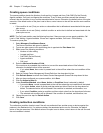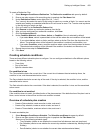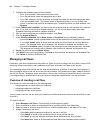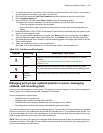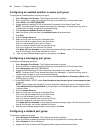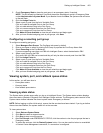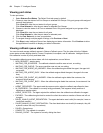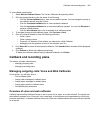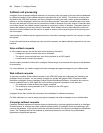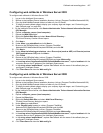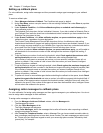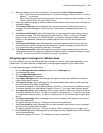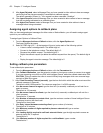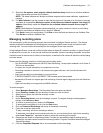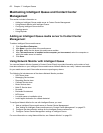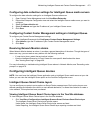466 Chapter 17 Intelligent Queue
Callback call processing
Intelligent Queue processes callback requests in a continuous loop using each of the ports that are dedicated
to callback processing. Each callback request is submitted with a call "profile". This profile is an action plan
that defines the ACD path to attempt, the client’s telephone number, the client’s name, queue thresholds to
adhere to, and the language in which the call should be processed. The system processes calls in the order
that they are received, but each call has a maximum number of attempts and a retry interval. If the client does
not answer the call, the callback request requeues to a maximum number of attempts. The system does not
attempt the callback until the retry interval is exceeded. Each callback structure also defines the maximum
amount of time the callback port will wait for an agent to answer, before requeuing the call and moving on to
the next request.
Upon receipt of a callback request, agents can listen to the caller’s message, place the call, requeue, or reject
the request.
A user with administrative privileges can view, prioritize, requeue, and delete callback requests from the user
interface.
Voice callback requests
A voice callback request can ask the caller for the following information:
• A telephone number at which they can be contacted
• The caller’s name (recorded as a .wav file for playback by an ACD agent)
• A confirmation to submit the request
Once the caller provides the information, Intelligent Queue hangs up and records the request in the database
for processing.
For voice callbacks, you need to assign both caller messages and agent messages to your callback plans.
Web callback requests
A customer completes a Web callback request on an HTML/ASP page that is designed and hosted by the
Intelligent Queue customer. You can see an example of a sample web page at Start=>Programs=>Mitel
Networks=>Intelligent Queue=>Intelligent Queue DotNet Webcallback Example. A customer who wants to
receive a callback from an ACD Agent fills out the following required information on the web form:
• The telephone number at which they can be contacted
• The customer’s name (presented as a TTS rendition to the ACD agent)
• The target ACD path
Intelligent Queue then submits the information to the database for callback processing.
For Web callbacks, you need to assign only agent messages (not caller messages) to your callback plans.
Campaign callback requests
Campaign callback requests are requests that are originated by a business application used by an Intelligent
Queue customer. A customer can make callback requests directly to Intelligent Queue by submitting a new
record in the database. If the record includes the required information, the request is processed in the callback
queue. The Campaign table of the database is password-protected to ensure that only authenticated
applications can generate requests.



